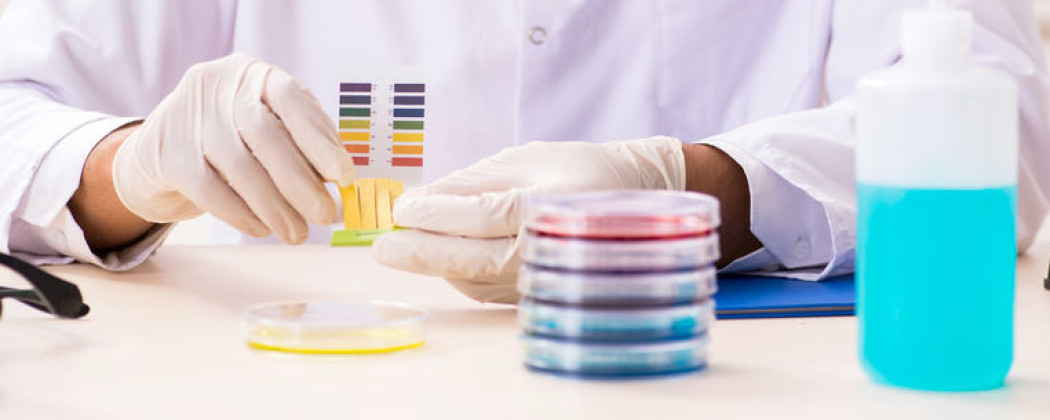Let Blood Values Test measure your acidity for free through a saliva test.
A good acidity level in the body is one of the most critical factors for good health. The pH value ranges from 0 to 14. Our body functions best with a neutral pH value of around 7. Minerals can deacidify and restore our body. So it is important to eat a lot of de-acidifying food (vegetables and fruit) and less acidifying food (animal proteins, cheese, dairy products, cola, soft drinks, coffee, cereals) so that the minerals can keep up with the recovery.
Symptoms of too high acidity
If your acidity level is too high you may experience symptoms such as;
- sleep disorders
- constipation
- acid regurgitation
- studded tongue
- caries
- susceptibility to infection
- hair loss
- skin problems
- muscle cramps
- depression
- libido loss
- allergies
- diabetes
- gout
- heart attack
- rheumatoid arthritis
- stroke
- gastric ulcer
Reducing acidity
To combat acidification it is necessary to de-acidify the body. De-acidification can be done in different ways.
1. Limit acidifying factors:
- stress
- smoking
- medicines
- excessive muscle strain and harmful radiation
2. Limit acidifying foods and beverages such as;
- animal proteins
- sugars
- carbonated drinks
- alcohol
- coffee etc.
3. More deacidifying foods such as;
- vegetables
- potatoes
- nuts
Here is an overview of acidic foods to avoid, to baisical foods to eat more of to improve your acidity:

How do you measure your pH value?
It is best to measure your average pH value every now and then so that you can get a better understanding of your acidity.
The result of the average pH value of, for example, 3 consecutive test days or 3 different test moments (morning, afternoon and evening)
- Average pH between 6.5 and 7.0 = No significant acidification
- Average pH between 5.5 and 6.5 = Moderate acidification
- Average pH between 4.5 and 5.5 = High degree of acidification
What is the normal pH value?
There is not just one pH value that is normal for our entire body. Every organ, every tissue, every fluid has a different 'ideal' pH value. The value for the blood is the most strict. It has to be around 7.4. Fluctuations between 7.35 and 7.45 are still acceptable, but it is important that it remains as stable as possible. In case of deviations your body will start to remove the acid via your lungs and kidneys. Examples of pH values in our body:
- Blood: 7.35 - 7.45
- Saliva: 6.00 - 7.50
- Stomach: 1.35 - 3.50
- Urine: 4.50 - 8.40
- Small intestine: 6.50 - 7.50
- Large intestine: 5.60 - 6.90
Acidity of the blood
In humans, the normal pH value of the blood lies between 7.35 and 7.45. Thus the blood is slightly alkaline. If the acidity of the blood increases (decreasing pH), acidosis occurs. If your blood becomes too acidic, your body will try to correct it. You start breathing faster and deeper so that acidic substances can leave your body. These acid substances are dissolved in the air you breathe out. Your kidneys can also excrete more acidic substances through your urine. If you are healthy, the balance will restore itself. If this is not the case and the pH-value of your blood drops below 7.35, you speak of acidosis. When the acidity of the blood decreases (rising pH) an alkalosis occurs, for example by hyperventilation or an excessive use of baking soda against stomach acid.
We cannot measure pH in the blood. We can measure uric acid, where an increase indicates gout, or LDH, lactic acid which is caused by acidification through too much exercise.
If these tests are not in your chosen survey, you can always add them to create your custom survey.
Blood value test measures acidity via urine
You should actually measure the acidity of your urine over a period of several days, each time you have to urinate, and keep a record of the results in a table. During the night, your liver has already filtered many acidic elements from your body without being disturbed by new supplies (intake of acidic products). That is why the result of the morning urine is always lower than that of the day urine.
The acidity of the urine should be between 5 and 7. The urine after a meal is often alkaline, around a pH of 8, this is due to a greater production of gastric juice after the meal. A more acidic urine (pH
The National Health Check-up also includes the pH of the urine, but many other important measurements are taken to chart your health:
For more information about the National Health Fair 2020 click here
For more information on deacidification read also this blog: https://info.bloodtesting.nl/wat-te-doen-bij-een-hoog-urinezuur/



Super cc
at 06 Feb 2020Ellen van Gijsel
at 10 Feb 2020